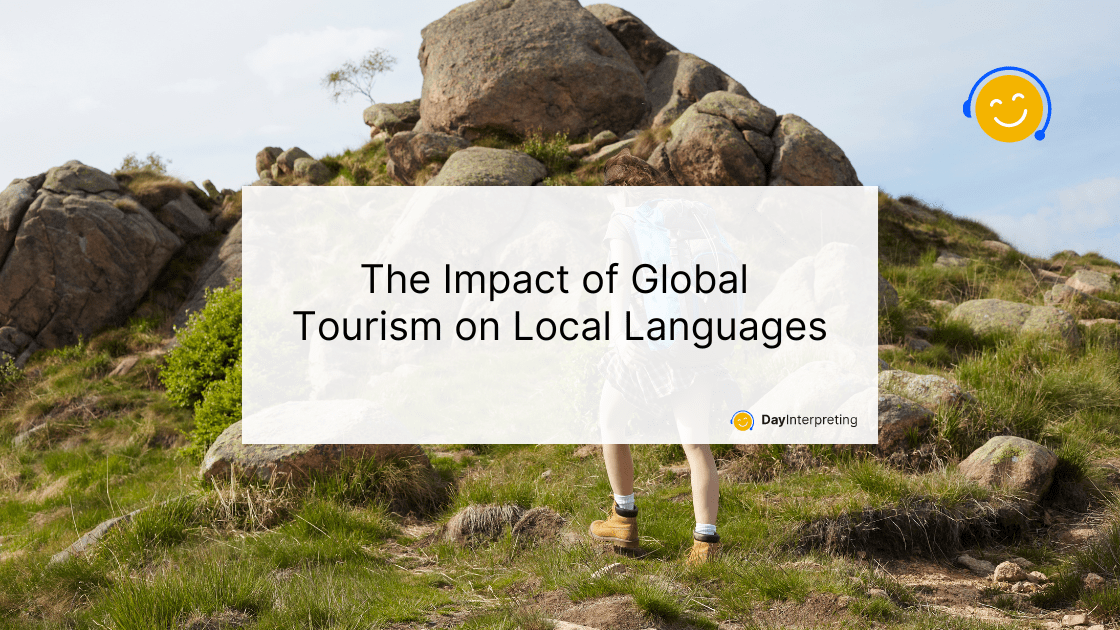Global tourism is like a giant melting pot, where people from all corners of the world come together to explore new places, enjoy different cultures, and make unforgettable memories. But did you know that tourism doesn’t just impact the sights and sounds of a place? It also has a big influence on local languages. Let’s dive into the impact of global tourism on local languages around the world and what this means for both travelers and locals.
How Tourism Brings Languages Together
When tourists visit a new country, they bring their own languages and ways of speaking with them. This mingling of languages can lead to some exciting changes!
Creating New Words and Phrases
Imagine you’re in a bustling market in Thailand. A tourist might ask for a “spicy noodle dish” in English, but the local vendors might create a new Thai word or phrase to describe this dish. Over time, this new term can become part of the local language! This process, where languages borrow words from each other, is known as “language borrowing” and it helps keep languages vibrant and evolving.
Learning from Each Other
Tourists are often curious about the local way of speaking. This curiosity can lead to the creation of “language hybrids,” where elements of different languages mix together. For example, in popular tourist destinations, you might hear a mix of English and Spanish, creating a fun and unique way of communicating. Locals and tourists both get to learn new words and expressions, making conversations more interesting and dynamic.
The Impact of Global Tourism on Languages
Local dialects are like the unique accents and ways of speaking that make a region special. Global tourism can have both positive and negative effects on these dialects.
Positive Changes
Tourism can bring a fresh spotlight to local dialects. When tourists are interested in a specific dialect, locals might take more pride in using and preserving it. For instance, in some regions, local guides might start offering tours in traditional dialects to attract tourists who want an authentic experience. This helps keep these dialects alive and celebrated.
Challenges and Risks
On the flip side, there can be challenges. Sometimes, local dialects might become less common as more people start using a dominant language like English. For example, in tourist-heavy areas, English might become the go-to language for business and communication. This can lead to a decline in the use of local dialects, as younger generations might not learn or use them as much.
Language Preservation in the Age of Tourism
Preserving local languages in a world of global tourism is like trying to keep a garden thriving amidst changing weather. It requires effort and care.
Celebrating Language through Tourism
Some places have embraced tourism as a way to celebrate and promote their languages. Festivals, cultural events, and language classes can all be part of this celebration. For example, a festival might include performances and storytelling in local languages, drawing tourists who are eager to learn and experience the language firsthand.
Supporting Local Language Initiatives
Tourists can also help preserve languages by supporting local initiatives. This might include choosing to stay in locally owned accommodations, buying products from local artisans, or participating in cultural tours that highlight language and tradition. By doing so, tourists help create a demand for the preservation of local languages and cultures.
The Future of Language in a Globalized World
As tourism continues to grow, it’s important to think about how we can balance global influences with the preservation of local languages. Here are a few ways to keep the language landscape diverse and rich:
Embrace Language Learning
Learning a few words or phrases in the local language can make a big difference. It shows respect for the culture and can enhance your travel experience. Plus, locals usually appreciate the effort, even if your pronunciation isn’t perfect!
Support Cultural Exchanges
Participate in cultural exchanges that focus on language and tradition. This could be through language schools, cultural workshops, or community events. Engaging with local communities in this way helps keep languages alive and thriving.
Advocate for Language Preservation
Support organizations and initiatives dedicated to preserving languages. Many communities have programs aimed at documenting and revitalizing local dialects. Your support can help ensure these languages are passed down to future generations.
Wrapping Up
The impact of global tourism on local languages is astounding, bringing both exciting changes and challenges. By learning about and respecting the languages we encounter while traveling, we can help preserve the rich linguistic tapestry of our world. So, the next time you embark on an adventure, remember that your journey contributes to a global conversation—one where every language has a story to tell.





0 Comments